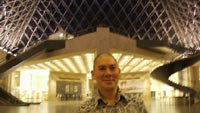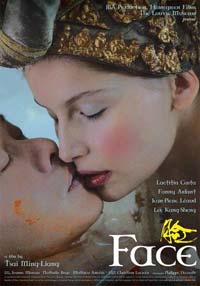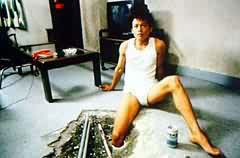Interview - Tsai Ming-liang
Malaysian-born, Taiwan-grown film director with a French touch
by Rosslyn Hyams
Article published on the 2009-07-09 Latest update 2009-07-14 14:48 TU
"There's a special significance to my mind, that the Paris Cinema Festival has joined with the Louvre Museum to show my art house films, because it is a place where art is protected," says Tsai Ming-liang whose next film due out in November 2009, Visage (Face), is based on the ancient tale of Salomé, and was commissioned by the Louvre itself.
The film stars former model, Laetitia Casta, Fanny Ardant and Tsai's "mascot", Lee Kang-sheng who has appeared in all of Tsai's films. Ardant was the partner of the late director François Truffaut, one of Tsai's Nouvelle Vague (New Wave)cinema heros along with Jean-Luc Godard.
As in his previous films, Tsai likes his audience to laugh, even if the theme is serious. He's got quite a thing for musical comedy, and Visage is no exception. His own facial expression fluctuates between broad smiles, laughter and something grave."Of course the film talks about cinema, it's a reflection of cinema and the creative process," he explains. "But it's also a reflection about life, a view of the self. And this coproduction with the Louvre actually opens up new channels, it proves that films are also objets d'art and so can be part of a collection. It gives a different view of what film is."
His most often very long fixed-takes allow the audience to appreciate the beauty of what is laid out within each carefully composed frame. On the other hand, they certainly give viewers time to contemplate what ideas he is trying to convey - the solitude and needs of human existence, especially in cities, the need to preserve the world of cinema in the face of digitalisation and home movies, life, death, mourning.The sound of water, "an essential element of life", according to Tsai, is more current than the sound of words in his films.
"After watching French classics and the Nouvelle Vague - the cinema d'auteur - in Taiwan after I was 20-years-old and had come from Malaysia to study, that I realised that cinema could be a genuine work of art and a tool to vehicle a message. That opened up my view of cinema - it had been all Hollywood movies until then - and made me decide that it was my vocation."Many kilometres separate Paris and Taipei, where Tsai learned his craft. But art, he says, bridges the gap, no matter how wide.
"I didn't find France as such, France found me. My coming to France was quite natural because I already knew French cinema. French directors of la Nouvelle Vague perhaps didn't realise the extent of their influence in Asia and it's as if we took up the baton, as if the Nouvelle Vague is being carried by Asian film-makers."







